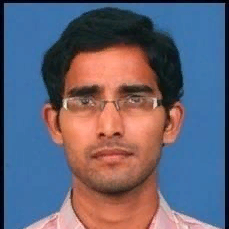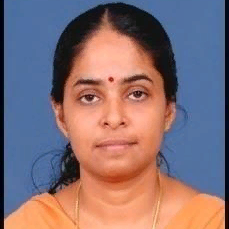International Journal of Image, Graphics and Signal Processing (IJIGSP)
IJIGSP Vol. 7, No. 1, 8 Dec. 2014
Cover page and Table of Contents: PDF (size: 601KB)
Application of Texture Characteristics for Urban Feature Extraction from Optical Satellite Images
Full Text (PDF, 601KB), PP.16-24
Views: 0 Downloads: 0
Author(s)
Index Terms
Gray Level Co-occurrence Matrix, energy, entropy, dissimilarity
Abstract
Quest of fool proof methods for extracting various urban features from high resolution satellite imagery with minimal human intervention has resulted in developing texture based algorithms. In view of the fact that the textural properties of images provide valuable information for discrimination purposes, it is appropriate to employ texture based algorithms for feature extraction. The Gray Level Co-occurrence Matrix (GLCM) method represents a highly efficient technique of extracting second order statistical texture features. The various urban features can be distinguished based on a set of features viz. energy, entropy, homogeneity etc. that characterize different aspects of the underlying texture. As a preliminary step, notable numbers of regions of interests of the urban feature and contrast locations are identified visually. After calculating Gray Level Co-occurrence matrices of these selected regions, the aforementioned texture features are computed. These features can be used to shape a high-dimensional feature vector to carry out content based retrieval. The insignificant features are eliminated to reduce the dimensionality of the feature vector by executing Principal Components Analysis (PCA). The selection of the discriminating features is also aided by the value of Jeffreys-Matusita (JM) distance which serves as a measure of class separability Feature identification is then carried out by computing these chosen feature vectors for every pixel of the entire image and comparing it with their corresponding mean values. This helps in identifying and classifying the pixels corresponding to urban feature being extracted. To reduce the commission errors, various index values viz. Soil Adjusted Vegetation Index (SAVI), Normalized Difference Vegetation Index (NDVI) and Normalized Difference Water Index (NDWI) are assessed for each pixel. The extracted output is then median filtered to isolate the feature of interest after removing the salt and pepper noise present, if any. Accuracy assessment of the methodology is performed by comparing the pixel-based evaluation on the basis of visual assessment of the image and the resultant mask image. This algorithm has been validated using high resolution images and its performance is found to be satisfactory.
Cite This Paper
D.Shanmukha Rao, A.V.V. Prasad, Thara Nair,"Application of Texture Characteristics for Urban Feature Extraction from Optical Satellite Images", IJIGSP, vol.7, no.1, pp.16-24, 2015. DOI: 10.5815/ijigsp.2015.01.03
Reference
[1]http://support.esri.com/en/knowledgebase/gisdictionary/term/automatedfeature extraction.
[2]Vincent Arvis, Christophe Debain, Michel Berducat, Albert Benassi.2004." Generalization Of The Cooccurrence Matrix For Colour Images: Application To Colour Texture Classification." Journal of Image Analysis and Stereology 23:63-72.
[3]Örsan Aytekın,, Arzu Erener , İlkay Ulusoy & ?ebnem Düzgün. 2012." Unsupervised building detection in complex urban environments from multispectral satellite imagery." International Journal of Remote Sensing Vol. 33, No. 7, 2152–2177.
[4]J. Gu,, J. Chen, Q.M. Zhou, H.W. Zhang,, L. Ma. 2008." Quantitative Textural Parameter Selection For Residential Extraction From High-Resolution Remotely Sensed Imagery." The International Archives of the Photogrammetry, Remote Sensing and Spatial Information Sciences. Vol. XXXVII. Part B4.
[5]Martin Herold, XiaoHang Liu, and Keith C. Clarke. September 2003." Spatial Metrics and Image Texture for Mapping Urban Land Use Photogrammetric Engineering & Remote Sensing." American Society for Photogrammetry and Remote Sensing Vol. 69, No. 9, , pp. 991–1001.0099-1112/03/6909–991.
[6]Dipankar Hazra. February, 2011." Texture Recognition with combined GLCM, Wavelet and Rotated Wavelet Features." International Journal of Computer and Electrical Engineering Vol.3, No.1, 1793-8163.
[7]R. Haralick, K. Shanmugam, and I. Dinstein. 1973 "Textural Features for Image Classification", IEEE Trans. on Systems, Man and Cybernetics, SMC–3(6):610–621.
[8]R. M. HARALICK, 1979. "Statistical and structural approaches to texture", Proc. IEEE, pp. 786-804, May 1979.
[9]Fritz Albregtsen, "Statistical Texture Measures Computed from Gray Level Co-occurrence Matrices, Image Processing Laboratory, Department of Informatics, University of Oslo, November 5, 2008.
[10]Soh, L.K. and Tsatsoulis, C., 1999. "Texture analysis of SAR sea ice imagery using grey level co-occurrence matrices." IEEE Transactions on Geoscience and Remote Sensing, 37(2), 780-795.
[11]Shaban, M., A., and Dikshit,O., 2001. "Improvement of classification in urban areas by the use of textural features: the case study of Lucknow city, Uttar Pradesh" International Journal of Remote Sensing, 22(4), 565-593.
[12]Swain, P.H. and Davis S.M., 1978. Remote Sensing: The quantitative approach, New York: McGraw-Hill.
[13]D. Swets, J. Weng. 1996. "Using Discriminant Eigenfeatures for Image Retrieval", IEEE Transactions on Pattern Analysis and Machine Intelligence, vol. 18, no. 8, pp. 831-836.
[14]Mcfeeters, S.K., 1996, "The use of normalized difference water index (NDWI) in the delineation of open water features."International Journal of Remote Sensing, 17, pp.1425–1432.
[15]http://pixinsight.com/doc/legacy/LE/19_morphological/median_filter/median_filter.html.


